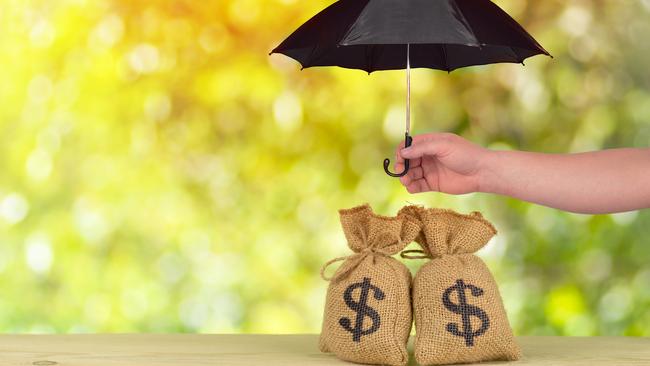Safe from a financial storm: how to protect your biggest asset
People are quick to buy insurance for their homes, cars and other items, but one huge asset is often forgotten.

Business
Don't miss out on the headlines from Business. Followed categories will be added to My News.
Have you ever wondered what your largest personal asset is?
A home, many will say – well, at least those who have their own home and aren’t renting somebody else’s. They’re wrong.
Others might declare it’s their superannuation balance, increasingly likely to be hundreds of thousands of dollars as Aussies get older. That’s usually wrong, too.
Most peoples’ biggest personal asset is their income-earning potential, and its size – even for middle or lower-income earners – can be staggering. At least for anyone aged under 45.
The Australian Bureau of Statistics says the average full-time wage in Australia today is $98,000 – a number many may feel is stupidly high compared with their own income, but remember that averages are pushed up by the minority earning $300,000, $400,000 or $1 million-plus salaries.
A more accurate figure is median weekly earnings, also provided by the ABS. It’s the midpoint of all income earners across Australia, and is currently $1300 per week or $67,600 a year.
Somebody earning a median income with about 30 years remaining in the workforce will get paid more than $2 million over their career. For someone on the average wage it’s almost $3 million.
You can calculate future income by multiplying your wage by how many years you expect to keep working, although it won’t factor in wage rises so it’s a minimum.

But while people are happy to insure homes and cars and other stuff, many don’t think about protecting their biggest asset.
The solution is income protection insurance, and now is the perfect time of the year to be thinking about it because you can get a quick tax by paying in June.
Income protection insurance pays for part of your lost income if you are unable to work because of illness or disability. The payments can run for two years, five years, up to age 65 or another time period you pick, but premiums will be higher the longer you set.
The Council of Australian Life Insurers says insurance companies paid out $3.7 billion of income protection payments in 2022, but it warns that 3.4 million people are underinsured to meet their basic income protection needs.
While a young person may not require life insurance death cover because they don’t yet have a spouse or family to provide for, they do have a future income.
MLC Life Insurance technical expert Marshall Ross says “for younger Australians, income protection is a no-brainer”.
“If something goes wrong and you have income protection, you might get up to three quarters of your monthly income while you’re off work,” Ross says.
“That’s a huge help when it comes to covering essential living costs while recovering.”
Cost is always a concern, but income protection policies can be tweaked to have different waiting periods and payment levels. Premiums are also tax-deductible, and typically cost $20-$40 per week.
Alternatively, people can hold income protection cover inside their superannuation, where premiums are paid for by their compulsory employer super contributions.
If you’re unsure whether you’re covered or what it’s costing, check your super fund.
You may find that savings are available by choosing a longer waiting period before income protection payments would kick in. If you have a lot of sick leave up your sleeve, this can be a great cost-saving strategy.
We often baulk at spending money on insurance premiums, especially when we don’t think bad stuff will happen to us. But the peace of mind from protecting our biggest asset should be worth paying for.
Originally published as Safe from a financial storm: how to protect your biggest asset





